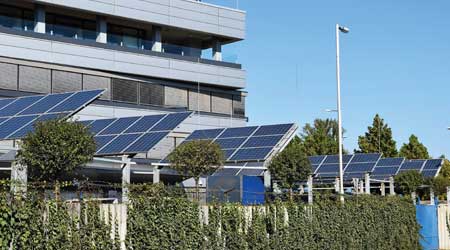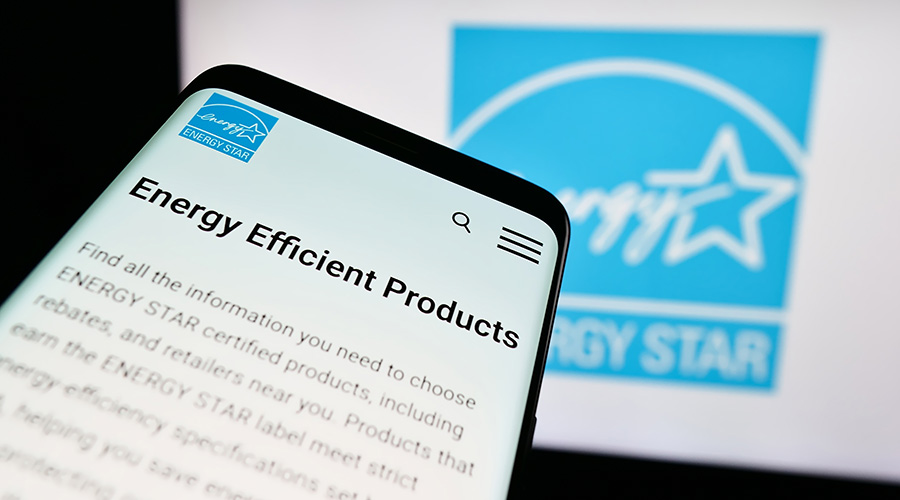Is Solar PV a Good Investment for Your Building?
With prices still dropping rapidly, and PACE and green leases gaining momentum, solar is making more sense on both owned and leased buildings.
On-site solar PV systems can be a great investment for commercial buildings of any size, based on economics, visibility, and employee attraction and retention. Yet many building owners and facility managers are wondering if it’s a wise decision to invest in on-site solar now.
The cost of solar has decreased rapidly, with commercial solar prices dropping 66 percent since 2010. These low prices can be made even lower by taking advantage of the investment tax credit (ITC). This tax credit is a dollar-for-dollar reduction in the income taxes that a person or company would otherwise pay the federal government. But companies that apply for the ITC should act quickly. While it is currently at 30 percent of the total solar electric system cost, it will decrease to 26 percent by 2020, 22 percent by 2021, and only 10 percent for 2022 and beyond.
With these low costs, the levelized cost of energy, or the average amount that you will pay for each unit of electricity that your solar system will produce over its lifetime, is between $0.06/kWh and $0.08/kWh including the federal ITC.
But cost isn’t the only reason to invest in on-site solar. Having solar on your building lets everyone know that your company is walking the talk when it comes to sustainability goals, which is hard to showcase with efficiency and off-site solar. It can also help attract and retain employees, as 90 percent of people now say they wish to work for a company with a strong green reputation.
With that said, it seems that solar projects are best suited to businesses that have higher electricity rates (greater than $0.08/kWh), own their own building, have access to capital, have corporate sustainability goals, and plan to stay in their building for the long term. However, there are actually ways to make solar work even outside of this ideal scenario.
Solar for leased buildings
More than 50 percent of commercial buildings are leased, and on-site solar makes sense for many of them. Buildings that incorporate sustainability have lower vacancy rates and improved tenant retention, and can even charge higher rents. This is all in addition to utility bill savings.
While many building owners may be apprehensive to invest in solar if the tenants of the building pay the utility bills (known as the split incentive), this can be overcome by developing a green or net-zero energy lease, a rental agreement in which tenants commit to or gain incentives by participating in energy conservation.
The Colorado-based developer Morgan Creek Ventures used a green lease for Boulder Commons, its development consisting of two commercial net-zero energy office buildings. A net-zero energy building produces as much energy as it consumes over the course of a year.
Morgan Creek Ventures was in a triple net lease, which meant the utility cost is paid for by the tenant, making it difficult to get a return on investment from their solar purchase. Because the developer could not charge its tenants directly for the energy produced by the solar PV due to local regulatory restrictions, it added an energy charge to the base rent calculated using energy expenses for a standard office in Boulder.
To determine a fair energy charge, Morgan Creek Ventures studied the energy bills of other local properties, used the lower end of that range, and added it to the base rent.
The developer will pay the actual utility bill, so any reduction in energy costs beyond the energy charge will go to the building owner to help recover the solar PV costs. This also provides an incentive for the landlord to continue reducing energy costs over time and to invest in technologies like energy storage, demand response, or load flexibility, which would increase the return by reducing demand charges. This process resulted in a 6.5 percent return on investment for the developer.
Another way to solve the split incentive issue is through a property assessed clean energy (PACE) program. PACE is a financing structure in which building owners borrow money for energy efficiency, renewable energy, or other projects and make repayments via an assessment on their property tax bill. The property tax increase as well as the utility bill savings are passed on to the tenant. The typical 20-year financing term often results in no upfront costs and immediate savings. Pairing the renewable energy purchase with low-cost efficiency measures can improve the economics even further. The financing arrangement then remains with the property even if it is sold, allowing building owners to make the long-term investment required for solar even if they don’t know how long they will own the building. PACE may be funded by private investors or government programs, but it is only available in states with enabling legislation and active programs.
Related Topics:













